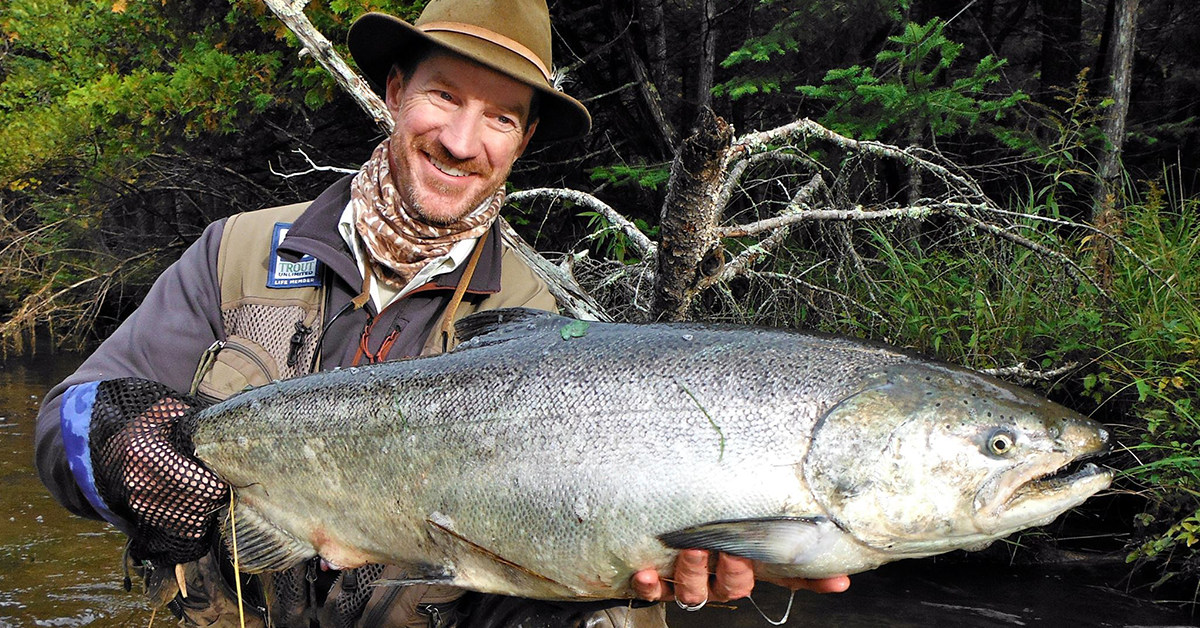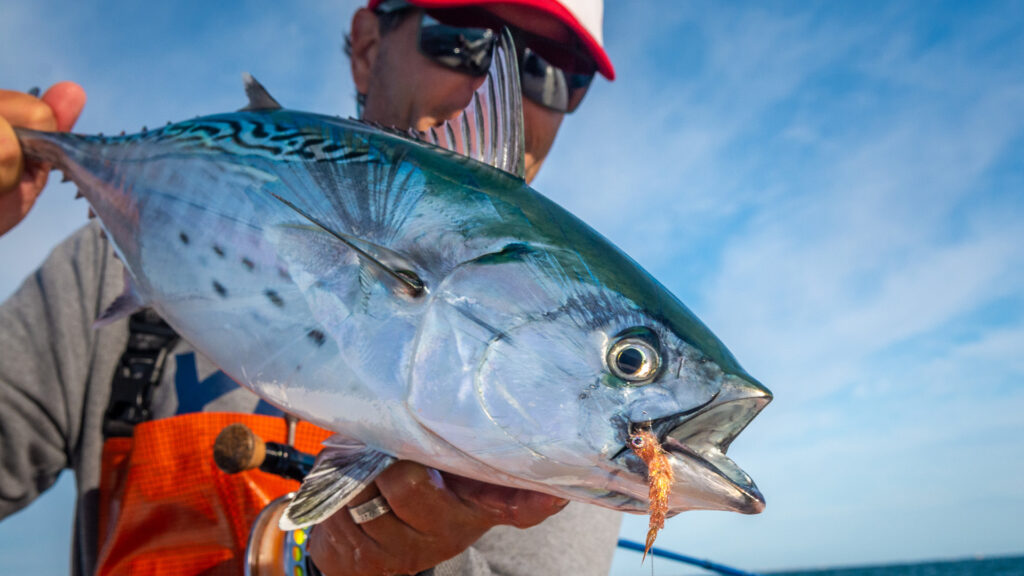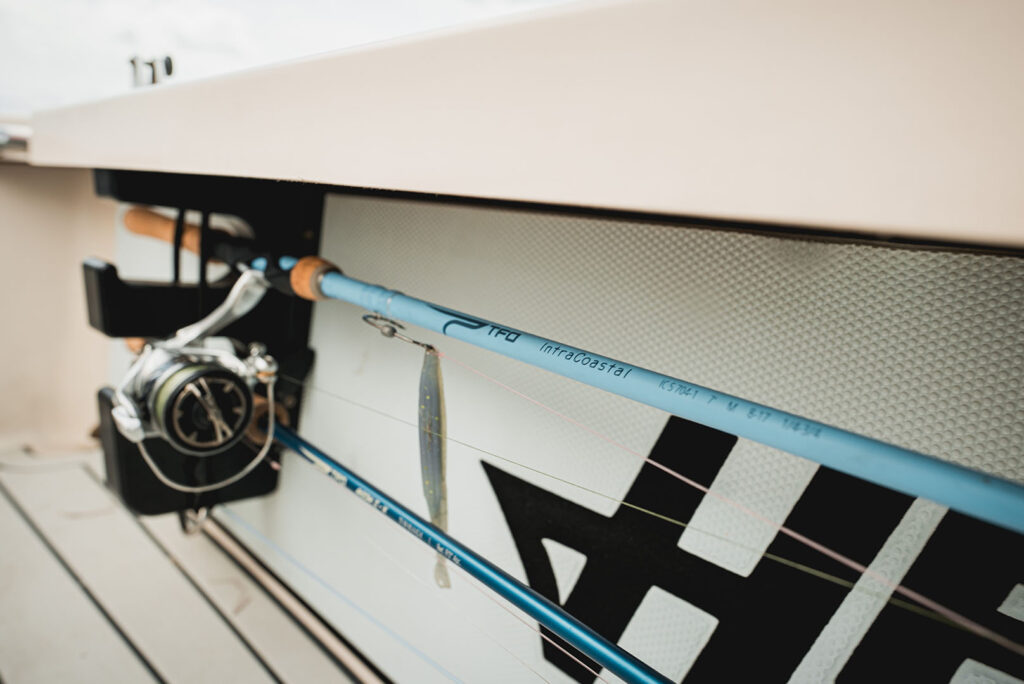Imagine hooking into a 20lb salmon for your first ever fish, followed by a tug of war stronger than any resistance you’ve ever felt before, as the fish sends you on a heart-beating, mad dash downstream while ripping line off your reel faster than you can pull off. A little different than catching a farm pond bluegill right?
Based out of northern Michigan, TFO rep Brian “Koz” Kozminski has caught his fair share of salmon, but these days he enjoys nothing more than watching first timers catch their first salmon, followed by a lifelong passion into a new sport. As salmon are starting (or in some cases have already started) to migrate into the rivers to spawn, we decided to catch up with Koz to get a feel of how, when and where to catch these hard fighting, anadromous fish.
Tells us about the fisheries in your area, and how non-native salmon came to be introduced to northern Michigan.
In 1966, salmon were introduced into the Great Lakes system as a test experiment to see how they would coexist with the native lake trout. After they were introduced, the salmon readily took whole because of another invasive, and very plentiful species in the Great Lakes – the alewife. The Great Lakes freshwater environment was perfect for the salmon that were introduced as they had plenty of food with the alewives everywhere.
Today, the salmon population is doing really well here. The average fish is 20-25 pounds. 30 pounders are not uncommon. We have three Michigan DNR State Fish Hatcheries that produce Chinook salmon: Thompson, Oden and Wolf Lake.
When do you start seeing the salmon migrate from the Great Lakes?
In northern Michigan, we usually start seeing or hearing signs of salmon during the first week of August. Salmon are pelagic species (open water feeders) – they like to feed out in the middle of the ocean, or in this case, the Great Lakes, and feast on those alewives.
A combination of factors trigger the anadromous salmon to begin to make their mating ritual journeys upstream: daylight, moon phase, and water level. Additionally, I believe water temperature plays a role, too.
If you talk to a Lake Michigan charter boat captain in the middle of the summer, they might say there are catching salmon at 210 – 220 feet. As it gets closer to fall, they’re marking and catching fish anywhere from 60 – 180 feet using divers and plugs. As the salmon begin to move into the river, that’s when fly fishing becomes more practical.

Switching up rigs
What is so special about salmon fishing for those that have never done it before?
I believe salmon fishing is key to getting more people into the sport. Sure we can go out and catch bluegill and panfish and have a good time. They definitely fight for what they are, but there’s no comparison to a 20lb fish at the end of your line. There’s nothing like watching your kid or someone else’s kid catch their first 20 pound fish, because that fish is going to fight and its going to pull more than anything they’ve ever felt before.
Additionally, I don’t I think a lot of people don’t totally understand why and when salmon move from the saltwater oceans and big lakes into the freshwater rivers. The act in itself is pretty extraordinary as salmon and steelhead are going from a hypertonic to a hypotonic environment. Humans obviously can’t do that. The body has to balance and regulate itself.
What are some typical indications/signs that you and other anglers go by to start focusing your attention on the rivers to catch salmon? Is it word of mouth from the lake fisherman or other anglers, or are you able to actually see the fish migrating in big groups upstream?
You’ll start hearing a lot of other anglers talk when the fish are starting to move up the river. You won’t really be able to see them migrating. These fish are accustomed to being in deep water most of their life, so they don’t see much daylight. Once they get into the rivers, they move mostly at night, and they’ll hold in deep pools during the day. You will see some movement, but all of our rivers have so much sand – they don’t feel comfortable being exposed on sand.
There are some rivers, like the Old Manistee, that get their salmon runs earlier than any other rivers in Michigan. You can be fishing for salmon in the middle of August there.
Tip – Most people think that if you go to a river that is known to have salmon in it, that you can catch them anywhere in the river. You’ve got to look at maps and know how short the river system is and if there are dams in place.For example, I fish the Manistee river a lot for trout, but I’m on the upper Manistee where there aren’t salmon. There are two dams below me, so all the salmon fishing is below Tippy Dam. You’ve also got to obtain a special permit to fish for salmon below certain reservoirs like Tippy, so be sure to check your local fishing regulations online or at your local fly shop.
How long does the salmon migration typically last?
In northern Michigan, rivers like the Jordan, Boyne, Sturgeon, and the Pigeon all get salmon, but these rivers are generally less than 50 miles long. Salmon can get through those river systems in a matter of days or less than a week. Therefore, your timing needs to be impeccable. If you don’t get your timing right, you can miss the fish. There will be a fresh run of salmonids, but knowing where there are is a key factor in your success.
The good news is that this happens all the way through October. You can go to almost any river on Labor Day weekend in Michigan, and you will find salmon running in some section of that water. I would also say that closer towards Halloween at the end of October, you will still find salmon in the rivers. We call those fish gravel zombies. At this point in the migration, their bodies are decaying and they start looking white. You’ll see the white cape of their tail sweeping in the river. We tend to avoid these fish and let them complete their cycle.
What kinds of rods and reel setups would you recommend for someone looking to catch their first salmon on the fly?
Rods – For those interested in doing the spey or two-handed approach, the Pro II Two-Handed is a great option to swing those classic salmon flies.
For those that want the single-handed approach, the TFR is a Great Lakes rod specifically built for our salmon fisheries. It is available in an 8wt & 10wt.
I typically don’t play with anything less than an 8wt when fishing for salmon.

The Pro ll Two-Handed matched with a Power Reel make a great setup for fishing for salmon. Photo: Lance Nelson
Reels – For most other fly fishing scenarios, your reel doesn’t play as much of a particular role in actually catching fish. Salmon fishing is absolutely the opposite. You’ve got to have a good reel. That fish is going to take off and you need to have a decent drag and be able to have the chance to recoup the amount of line that you’ve lost after they make their runs. You definitely want a large arbor. TFO’s Power Reel III is a great reel that I use a lot for this type of fishing.

TFO’s Power Reel. Photo: Lance Nelson
Do you recommend a specific fly line? What about leader and tippet material size/length?
Fly Lines – I use Scientific Anglers Amplitude Anadro or Mastery Sink tip. Amplitude Smooth Anadro/Nymph specifically has enough mass to get the fly out and it gets down. With salmon fishing, you’re trying to get that fly in front of the fish as much as you possibly can.
Leaders & Tippet – In the Great Lakes, we generally run 2-3 feet of 30lb down to 2-3 feet of 20lb maxima and maybe a couple feet of 12-15lb fluorocarbon tippet. These fish will beat you up, take you through the wood and into some heavy cover. You will need muscle in your leader to help control the direction of the battle, or you will lose.

Black egg sucking leech bugger pattern.
How about flies and streamer patterns?
**First and foremost, be sure that wherever you are going salmon fishing, that you check the local fishing regulations. Some rivers don’t allow you to use two flies, and some require single hooks only.**
Two-Fly Set-Ups – Usually your lead fly is something a little bit heavier and weighted like a big sucking leach that will get down, and then a trailer fly that could be an egg fly, small stonefly, or caddis fly larvae. I use a Tiemco 2488 hook to tie my caddis flies. The egg patterns need to be tied on a strong hook like a Tiemco TMC 105 in a size 6 or an 8. If you go with something cheaper, the salmon will likely straighten the hook out.
Streamers – I typically stick to using the two fly set up, but for the anglers that want to throw streamers, some anglers in Michigan like to fish the lower end of the rivers for this technique. If you’re out there at first daylight, the salmon still think that they’re in the big lake, so they might attack a small alewife pattern. So some kind of mullet fly or anything like that will work for streamer imitation patterns.

Fishing behind salmon for brown can be very rewarding. Photo: Sam Bosworth Media
I’ve heard that fishing behind spawning king salmon for brown trout can be very effective. Can you weigh in on that?
Definitely. That’s specifically why I tend to stick with the two-fly setup with the egg pattern, stonefly or caddis imitations, because the browns will tend to hang out behind the salmon and eat their eggs. Sometimes this scenario can be the best brown trout fishing there is.
At this point, the browns are in pre-spawn feeding mode. They usually spawn in the second week of November right after the salmon have done their cycle. Its pretty incredible how fish have their different cycles of spawning right after one another.
Everything has a cycle and a season for a reason so that everybody’s not doing the same thing, at the same spot, all at the same time. Your rainbows are in the spring, brown trout and brookies are in the fall right after the salmon. There’s a balance. When you look at the whole ecosystem of a river and how balanced it is, there’s no wonder to me that there’s a higher power that orchestrates all this stuff. Then you have the bugs, and that’s a whole other, but similar phenomenon.
Any particular casts or swinging techniques that you’d recommend for fishing for salmon on the fly?
Chuck & Duck is a very popular technique in Michigan. With this technique you are not actually “fly fishing”, but using a weight and a swivel on your leader in front of your flies that helps you get your flies down quicker. Similar to euro nymphing – you’re basically repeatedly flipping this rig through the run over and over again.
True ‘Chuck-n-Duck’ aficionados will use 9’ 8 weight lined with Amnesia or other low memory core running line. Directly to barrel swivel or three way swivel with 9” dropper attached to lead ‘slinkie’ and then 6-8’ 20# Maxima Chameleon to fly.
I remember some of my earliest days fishing on the West Bank of the Grand River at Sixth Street dam when I was in my teens-catching salmon and steelhead in much the same manner.

Photo: Alex Childress Photography
What suggestions would you offer to anglers for fighting salmon, and increasing their chances of netting/landing the fish? Trout set or strip set?
Definitely not a streamer/strip set, and that’s why you’re going to want to use a 9’-10’ stiff rod where you can lift it and get the hook into these large, boney-jawed fish. After setting the hook, the bigger salmon might stay where they are or go deeper, but once they realized they’re hooked, they tend to go in the stream and go downstream, which tends to make the situation a bit more challenging. Don’t be afraid to put pressure on the fish to keep them from getting into structures.
Any last tips you’d recommend to someone looking to target salmon on the fly for the first time?
Definitely visit the local fly shop. Buy a dozen flies, pay for your information, but also do your scouting online to research where you’re thinking about going. Shorten your learning curve by booking a guide and floating a river with an expert.
If you’re wading a river, you’re pretty much locked into a 100-500 yard section of river where you might not even see any fish. Conversely, if you’re floating, you’ve covering 4-5 miles of water and covering a lot more effective runs or pools where fish may be stacked up.
Guide Suggestions – TFO Ambassador Jeffrey ‘Bear’ Andrews for guiding on big water on the Manistee River, and Tom Werkmen for the Grand River.
We also have a great Atlantic salmon fishery in the Saint Mary’s River, which runs between the upper peninsula and Canada. One of the great TFO Ambassadors John Giuliani lives and guides up there. They do Atlantic salmon fishing all summer long, and they also get some run-in steelhead as well in the spring, summer, and fall.

Nothing beats a day on the river. Photo: Geoff Shirley Photography
Brian “Koz” Kozminski is the TFO rep for the Great Lakes region and has been affiliated with TFO on various levels for the past six years. He runs a guide service called True North Trout in the off-season (May-October). You can get a hold of Koz on Facebook and Instagram, via email.
![]()






